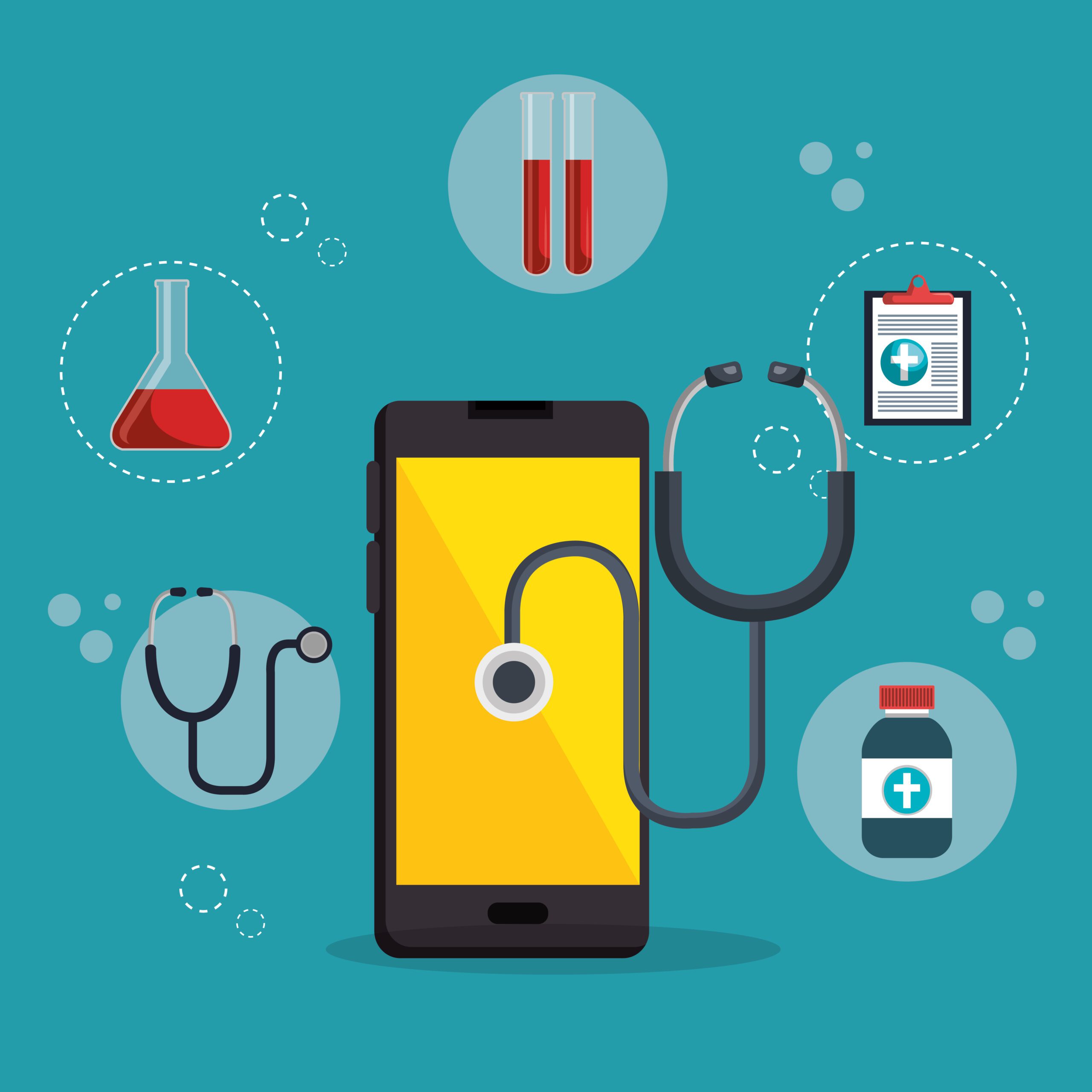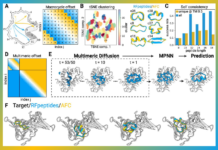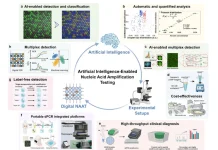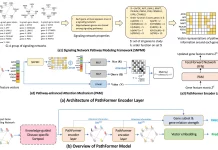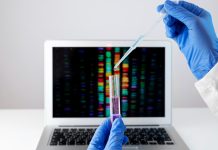Researchers at the University of Minnesota developed a new microfluidic chip that can identify viruses, pathogens, bacteria, and other biomarkers in liquid samples.
A research team from the University of Minnesota has developed a new microfluidic chip for disease diagnosis with few components and can be driven wirelessly by a smartphone. The breakthrough discovery opens the door to more easy and affordable medical testing at home.
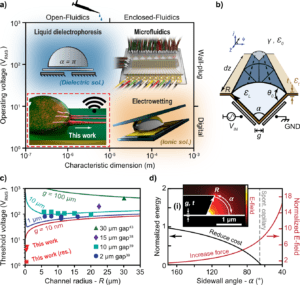
Image Source: Open-channel microfluidics via resonant wireless power transfer.
Microfluidics is the microscopic level study and manipulation of liquids. Developing “lab-on-a-chip” technology, or the ability to make devices that can diagnose diseases from a very small quantity of biological samples, such as blood or urine, is one of the most popular applications in the field.
Researchers are also commercializing the technique published in Nature Communications in April 2022.
Some disorders can already be diagnosed with portable instruments, such as fast COVID-19 antigen tests. However, the requirement of so many moving parts makes it difficult to design more complex diagnostic devices that might, for example, identify the specific strain of COVID-19 or assess biomarkers like glucose or cholesterol.
These chips would require materials to seal the liquid inside, pumps and tubing to manipulate the liquid, and wires to operate the pumps – which are all challenging to scale down to the micro-scale. The team from the University of Minnesota was able to develop a microfluidic device that does not require any of the large elements.
It’s not an exaggeration that a state-of-the-art, microfluidic lab-on-a-chip system is very labor intensive to put together. Our thought was, can we just get rid of the cover material, wires and pumps altogether and make it simple?
Sang-Hyun Oh, an electrical and computer engineering professor and senior author of the paper
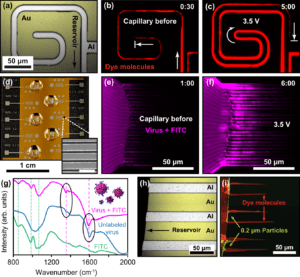
Image Source: Open-channel microfluidics via resonant wireless power transfer.
Several lab-on-a-chip devices identify virus infections or bacteria inside a sample by moving liquid droplets across a microchip. The researchers were motivated by a curious real-world phenomenon that wine enthusiasts are likely to be familiar with: “legs,” or lengthy droplets that form within a wine bottle due to surface tension generated by the evaporation of alcohol.
Oh’s team devised a technology that the researchers employed to arrange small electrodes close to each other on a small 2 cm by 2 cm chip, which generates strong electric fields that drag droplets across the chip and create a comparable “leg” of liquid to detect the molecules therein.
The created electric field is so strong because the electrodes are so close together, with only 10 nanometers between them, that the chip only requires a volt of power to operate. The researchers were able to trigger the chip using near-field communication signals from a smartphone, which is the same technology that operates contactless payment in stores.
This is the first time that researchers have been able to utilize a smartphone to wirelessly activate narrow channels without the usage of microfluidic structures, paving the path for more affordable and accessible at-home diagnostic gadgets.
This is a very exciting, new concept. During this pandemic, I think everyone has realized the importance of at-home, rapid, point-of-care diagnostics. And there are technologies available, but we need faster and more sensitive techniques. With scaling and high-density manufacturing, we can bring these sophisticated technologies to at-home diagnostics at a more affordable cost.
Christopher Ertsgaard, lead author of the paper and a recent University alumnus.
To commercialize the microchip platform, Oh’s lab collaborated with GRIP Molecular Technologies, a Minnesota firm that makes at-home diagnostic gadgets. The device is designed to identify viruses, pathogens, bacteria, and other biomarkers in liquid samples and has a wide range of applications.
To be commercially successful, in-home diagnostics must be low-cost and easy-to-use. Low voltage fluid movement, such as what Professor Oh’s team has achieved, enables us to meet both of those requirements. GRIP has had the good fortune to collaborate with the University of Minnesota on the development of our technology platform. Linking basic and translational research is crucial to developing a pipeline of innovative, transformational products.
Bruce Batten, founder, and president of GRIP Molecular Technologies
Story Source: Ertsgaard, C.T., Yoo, D., Christenson, P.R. et al. Open-channel microfluidics via resonant wireless power transfer. Nat Commun 13, 1869 (2022). https://doi.org/10.1038/s41467-022-29405-2
https://twin-cities.umn.edu/news-events/researchers-develop-smartphone-powered-microchip-home-medical-diagnostic-testing
Dr. Tamanna Anwar is a Scientist and Co-founder of the Centre of Bioinformatics Research and Technology (CBIRT). She is a passionate bioinformatics scientist and a visionary entrepreneur. Dr. Tamanna has worked as a Young Scientist at Jawaharlal Nehru University, New Delhi. She has also worked as a Postdoctoral Fellow at the University of Saskatchewan, Canada. She has several scientific research publications in high-impact research journals. Her latest endeavor is the development of a platform that acts as a one-stop solution for all bioinformatics related information as well as developing a bioinformatics news portal to report cutting-edge bioinformatics breakthroughs.

